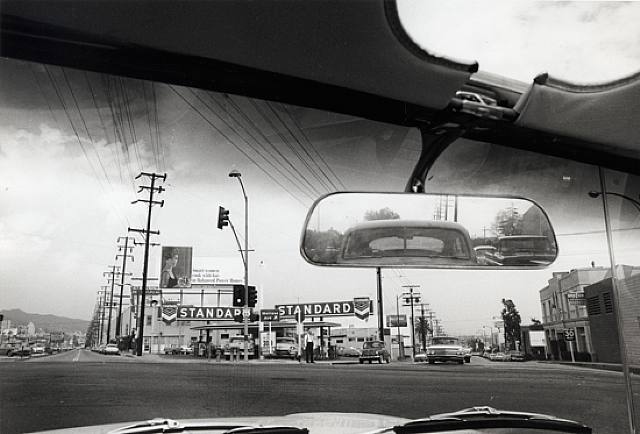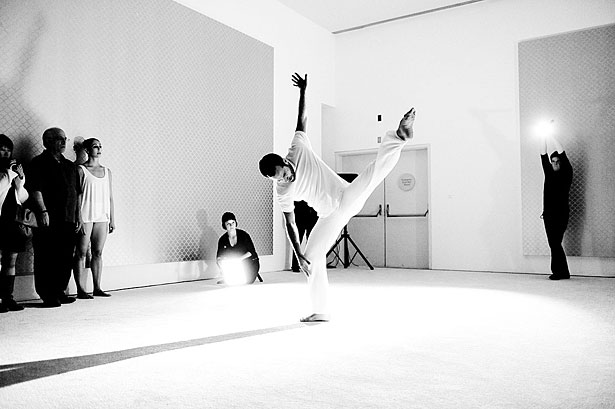Since the end of June, the media surrounding the art world in Los Angeles has been no less than frantic. Each art blog, culture section of the newspaper, and member of the art commenting elite has something to say about Los Angeles’ Museum of Contemporary Art’s (MOCA) recent parting with Paul Schimmel—the 22-year veteran chief curator who earned international respect and acclaim for his 1992 exhibition Helter Skelter: L.A. Art in the 1990s.
Within two weeks after the ousting of Schimmel, all four artists on the Board of Trustees had finalized their resignations. In Catherine Opie and Barbara Kruger’s joint letter of resignation, they stated their wish to see a revived commitment and investment into exhibitions and curatorial excellence in spite of the cultural crisis at MOCA. Their tandem resignation letter remains one of the sharpest critiques of not only MOCA, but the place of a museum institution in the 21st century. The letter reads:
[T]his is not about a particular cast of characters, about good actors and bad. It’s a reflection of the crisis in cultural funding. It’s about the role of museums in a culture where visual art is marginalized except for the buzz around secondary market sales… Can important and serious exhibitions receive funding without a donor having a horse in the race? Is attendance a sustaining revenue stream for museums? Has it ever been? These are questions we have been asking.
Opie and Kruger’s letter is a specific case study for what museum expert, theorist and USC art history professor Selma Holo considers the sustainable values of all museums—art, science, history or otherwise. In her recent publication Beyond the Turnstile, Holo outlines a core set of principles that a museum should operate under. According to Holo, the growing trend toward business-model museum institutions is undeniably efficient and necessary. Yet, she also believes that the principles that ultimately define the unique niche and role museums occupy cannot be forgotten. She defines 10 principles, including public trust, relevance, inclusion, and authenticity. Populist tactics and ticket sales at the box office certainly aren’t listed in Holo’s sustainable values of a museum.
Many have been condemning MOCA for quickly becoming synonymous with crowd-drawing exhibitions that rely too heavily on a celeb-studded pop-culture spectacle. Critics of MOCA’s recent agenda surmise that the pop charade is the only direction the museum will head under its Director, Jeffrey Deitch. This celebrity-obsessed program has been evident since Deitch’s poorly-received debut exhibition Dennis Hopper Double Standard, in July, 2010. In defense of his new populist approach Deitch recently stated in the Los Angeles Times that, “It’s a wrong [idea] that in order to be important you’ve got to be deadly serious and academic.”
If we measure the success of MOCA by attendance as some hallmark of accessibility, Deitch has done an excellent job. Deitch’s astoundingly successful 2011 exhibition Art in the Streets is an example. [See Cultural Weekly’s previous article on this show.] The show was a feat of pop-culture art and delivered in a massive saccharine wrapper. Art in the Streets challenged the role of a museum that had often served the art-minded few. Deitch’s exhibition flung open the doors of a well-respected highbrow art institution to welcome anyone with a passing interest. Under the guise of illegal art activity, the museum broached an important value: inclusion. Attendance for this show was unprecedented and drew in thousands of guests who had never set foot inside a museum.
Since Art in the Streets, there hasn’t been an exhibition under Deitch that rivals its attendance or substance. So despite Deitch’s cracking the vaulted doors of high-art and returning to Opie and Kruger’s resignation letter, this newfound way to sell tickets to the citizens of Los Angeles lacks one key quality: It is not sustainable.
More recent shows of Deitch’s have included an exhibition of fashion designer Hedi Slimane’s photographs and Rebel, a show curated and arranged by James Franco. The show was harshly criticized for being dull and, at best, pop-entertainment that banked on the celebrity status of Franco and fellow “artists” like Terry Richardson. While Franco and Deitch’s Rebel lacked authenticity and impact, the buzz it created defined its relevance in the Los Angeles art scene. And that was largely all that Rebel remained: buzz. Deitch’s only success with the exhibition was his coy use of Los Angeles’ pop-history and latent celebrity obsession to insist its relevance to Angelenos. The use of young celebrities and pop-culture was a brilliant attempt at appealing to the youth of Los Angeles, but the committed denizens of the art world remained unimpressed. Regardless of there being something to be said about the art world’s hostility towards Deitch’s tangential connection of art and pop-culture, Rebel was incapable of lifting pop culture to high art status.
In stark opposition to Rebel, another recent MOCA exhibition organized by Deitch has been quite successful. The Painting Factory: Abstraction After Warhol has been well attended and has genuine art historical impact and accompanying scholarship. The survey exhibition of abstract painting includes a new and bold movement of painters like Mark Bradford, Tauba Auerbach and the DAS INSTITUT collective, and makes positive strides in the art world. In addition to the exhibition’s dedication to current artistic trends and the importance placed on the creation of research and scholarly material, Deitch’s creative programming maintained the pop sensibility to draw crowds.
In addition, part of MOCA’s summer programming, along with the usual fun and experimental bands and DJs to draw in the younger Los Angeles museum-goers, is FRAMEWORK, a series of site-specific dance performances inside The Painting Factory galleries. The collaborative performances between L.A Dance Project/Benjamin Millepied and featured artist Mark Bradford, insists another new commitment to serious dance and performance-based artwork—something seriously absent in MOCA’s recent milieu and a welcome movement towards sustainability.
Of Professor Holo’s 10 values, the issue of public trust is the most serious one that MOCA must face. The MOCA board’s recent decision to hire a new senior curator may well be a step in the right direction because anyone who is good enough to take the job – and we can imagine that many qualified curators will view the post as toxic – will insist on autonomy, and will need to design shows that prove serious artistic intent.
The public is not made up of solely pop-culture hungry masses and the museum must not forget about the art minded few that demand to see shows of historical importance. I hope the museum refocuses its agenda and reexamines its own mission statement: “MOCA identifies and supports the most significant and challenging art of its time, places it in historical context, and links the range of the visual arts to contemporary culture.” Under Deitch, MOCA has relied too heavily on links to contemporary pop culture. Exhibitions like Rebel and Dennis Hopper Double Standard position MOCA banging on the door of pop culture— begging to be let in. Instead, it is time for MOCA to inform and shape pop culture with creative programming like FRAMEWORK.
There is a fine line between MOCA’s newfound accessibility and Deitch’s pop-sensibility, and it is time that they both recognize the difference.
Images, top to bottom: Dennis Hopper Double Standard; Art in the Streets; The Painting Factory; FRAMEWORK.




